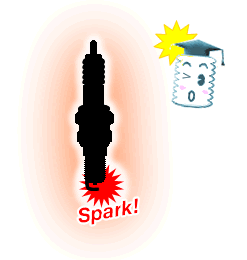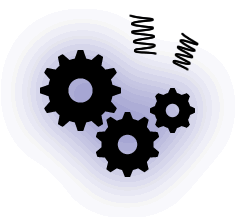
Episode 7: "Where are "springs" used in a car?" (No.2)
Hello, everyone. Italy's victory in the World Cup excited many fans worldwide. Unfortunately, Japan didn't make it to the finals, but I was very excited by the games. Nakata's retirement announcement shocked me and I'm sorry about it.
Well, summer vacations are coming and some of you may be thinking, "There are places I'd like to go, but should I go by car, plane or train?" In the travel vein, today's subject is Part 2 of "Where are Springs Used in Vehicles?"
Maybe we should be a little more appreciative of our vehicles, which work hard even in hot and harsh environments. Now about springs in vehicles! PIOLAX's spring products are used in the following areas: (1) fuel system, (2) drive system, (3) open/close mechanisms, (4) fasteners, (5) harnesses, (6) precision parts, and (7) clamp parts.
Last time, I talked about fuel system springs, so let's talk about springs in drive system this time. A drive unit means the engine and general structure producing and transmitting power to move the vehicle. PIOLAX manufactures various metal coil springs for engines and transmissions (gears)
But now you may be wondering about what happens to the fuel-air gas mixture after it ignites.

Likewise, there are two transmission types: automatic and manual. Both types act like bicycle gears, although the structure is different. An automobile shifts gears as the ratio of the engine and wheel speeds changes from starting to accelerating. It also shifts to match the road conditions, such as when climbing a hill. These transmission operations, including clutch release by the clutch pedal (for manual transmissions), are all under the control of coil springs.
That's it for today.
Next time, I'll talk about springs in opening and closing mechanisms. See you then!
Written by Banekko (a child of spring)




